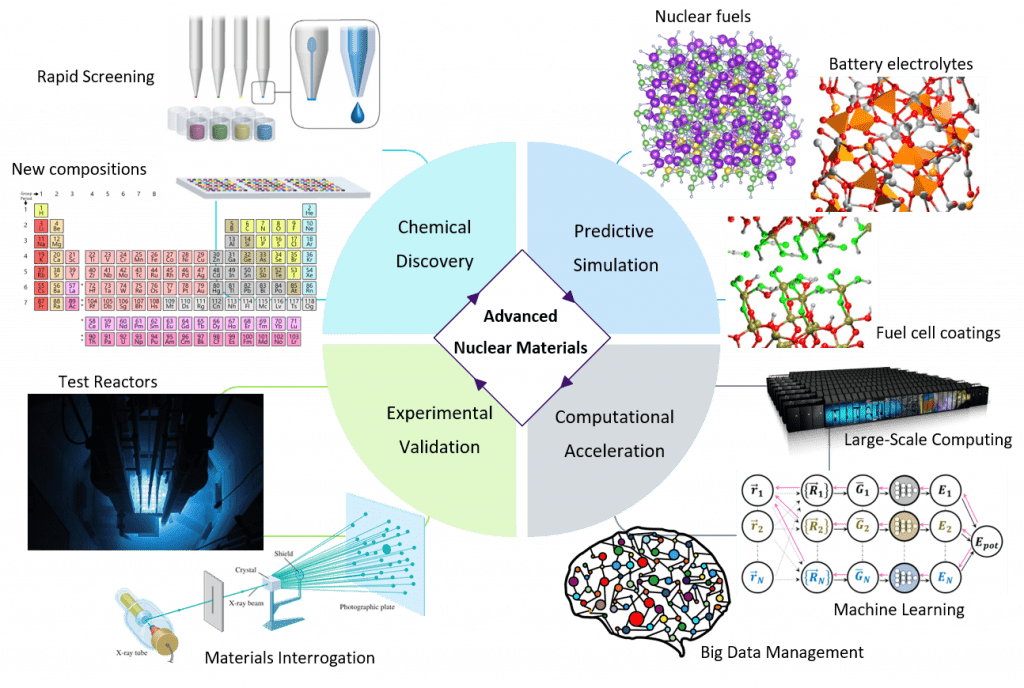
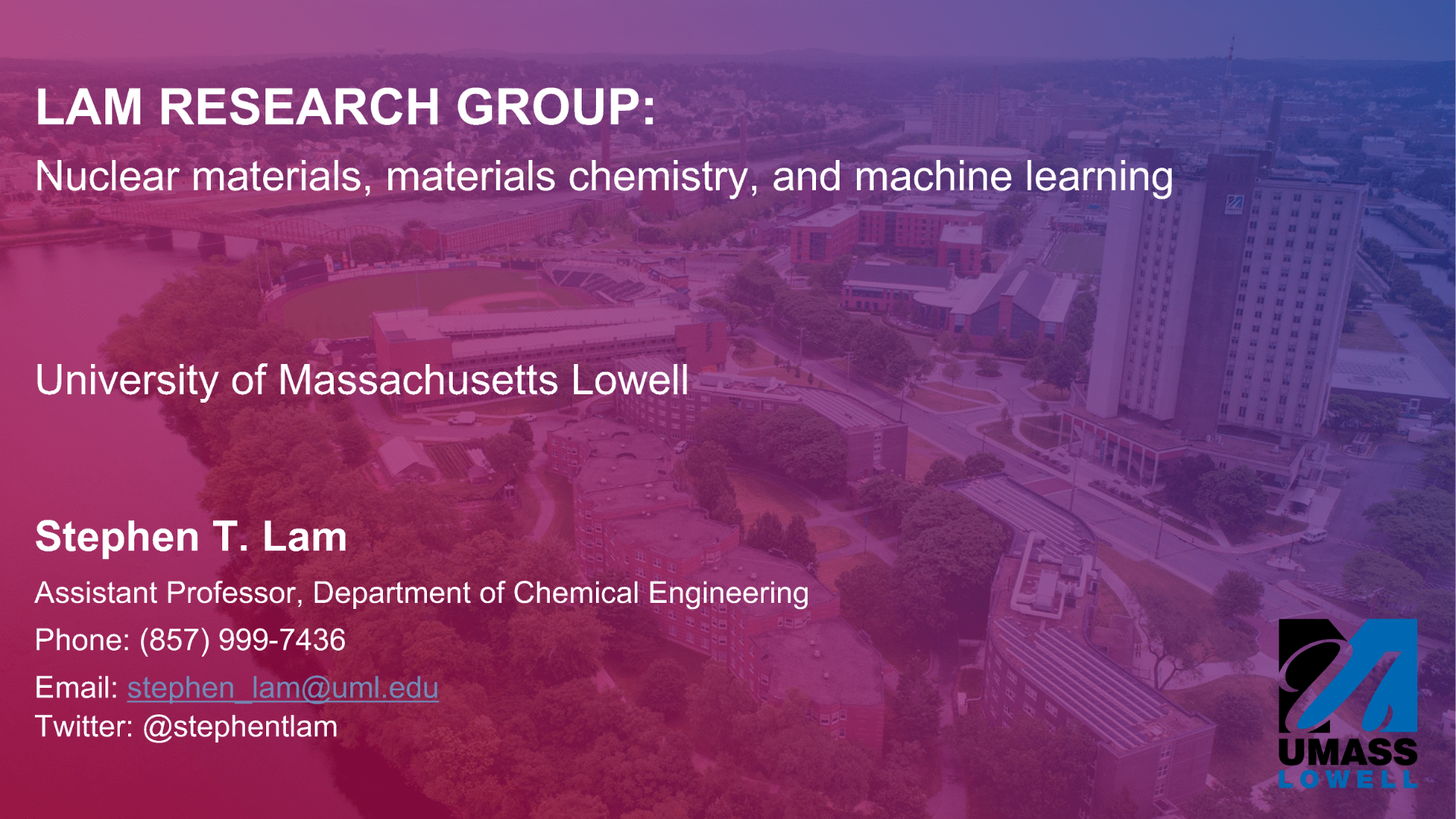
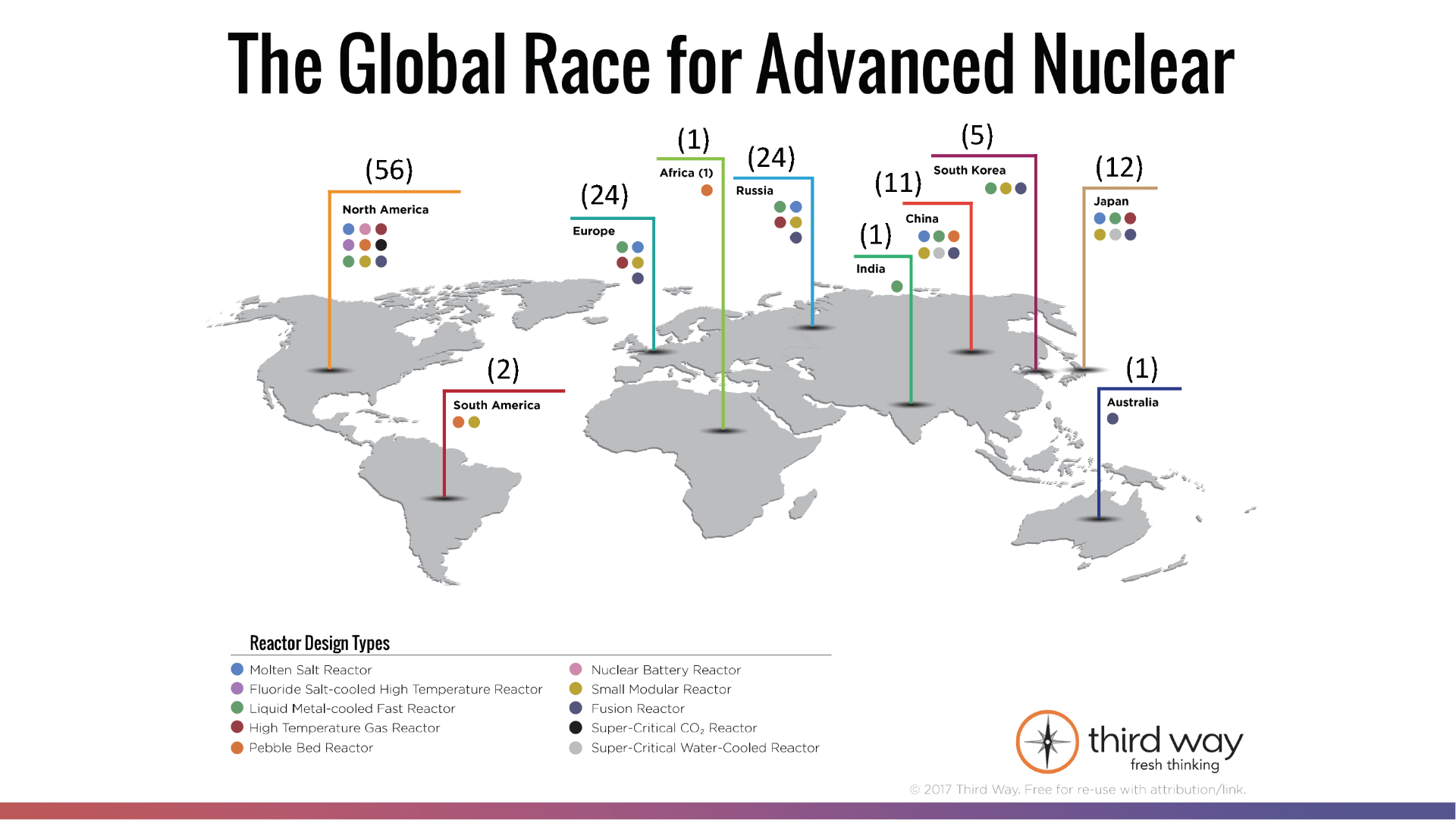
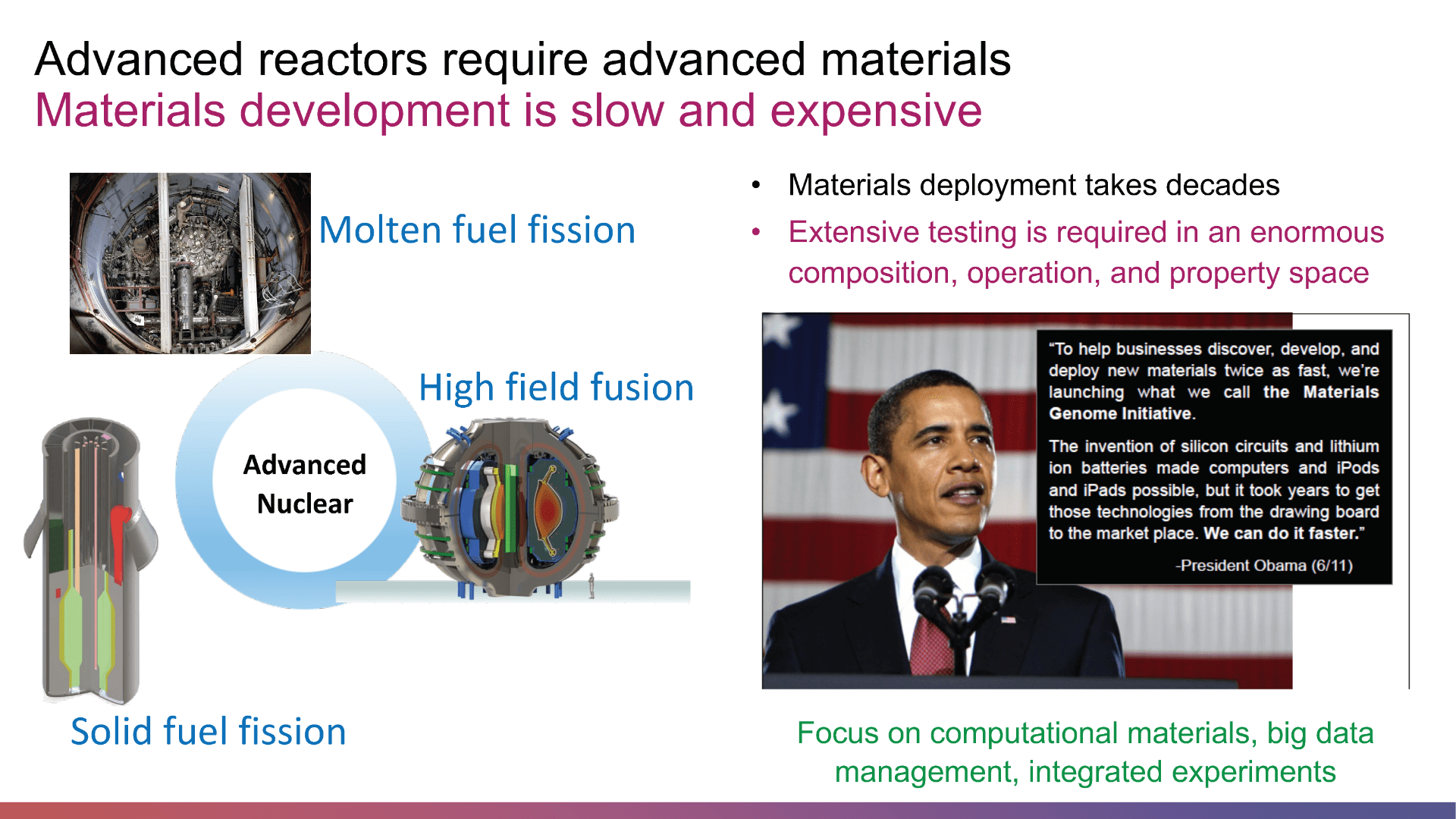
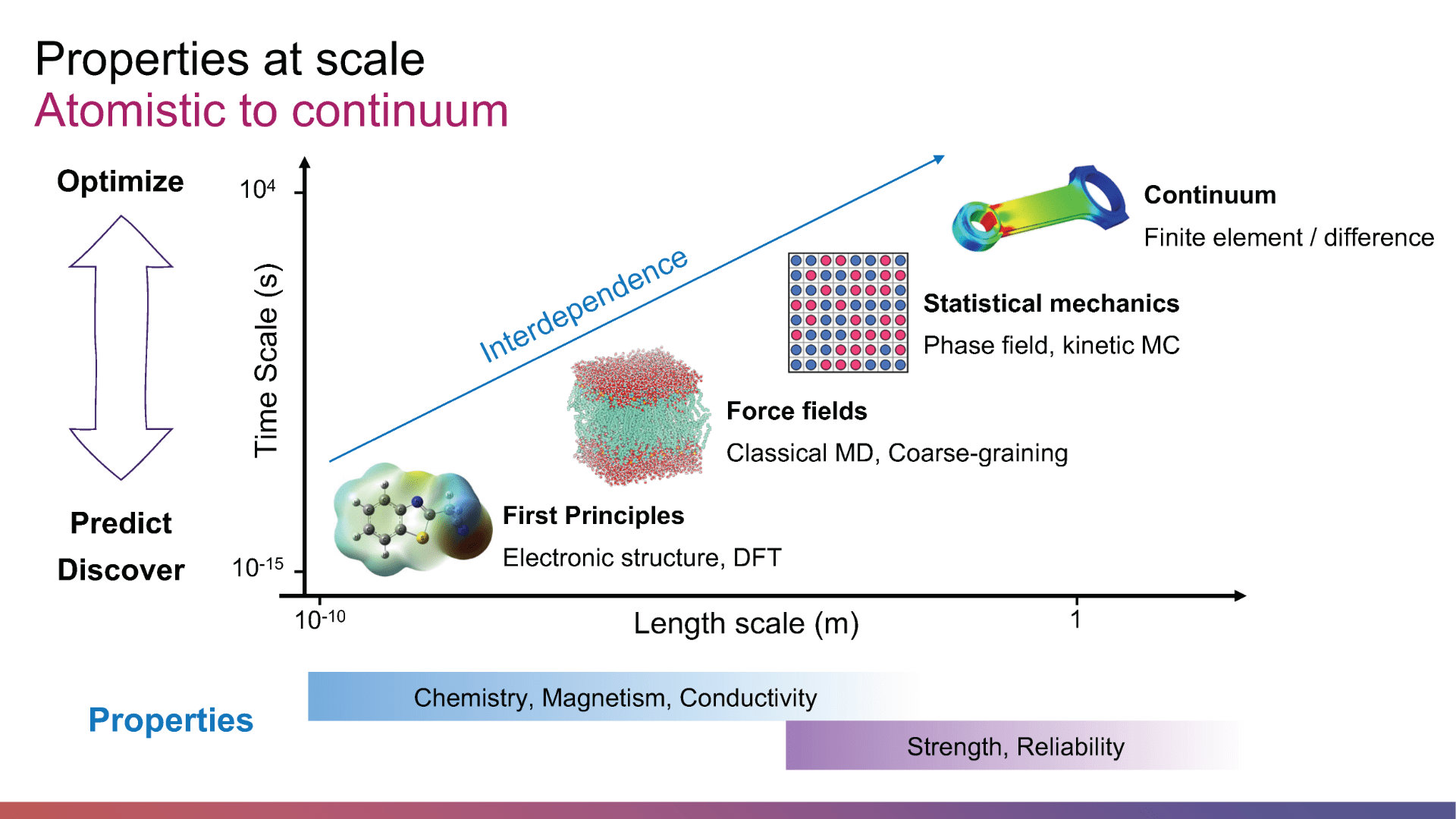
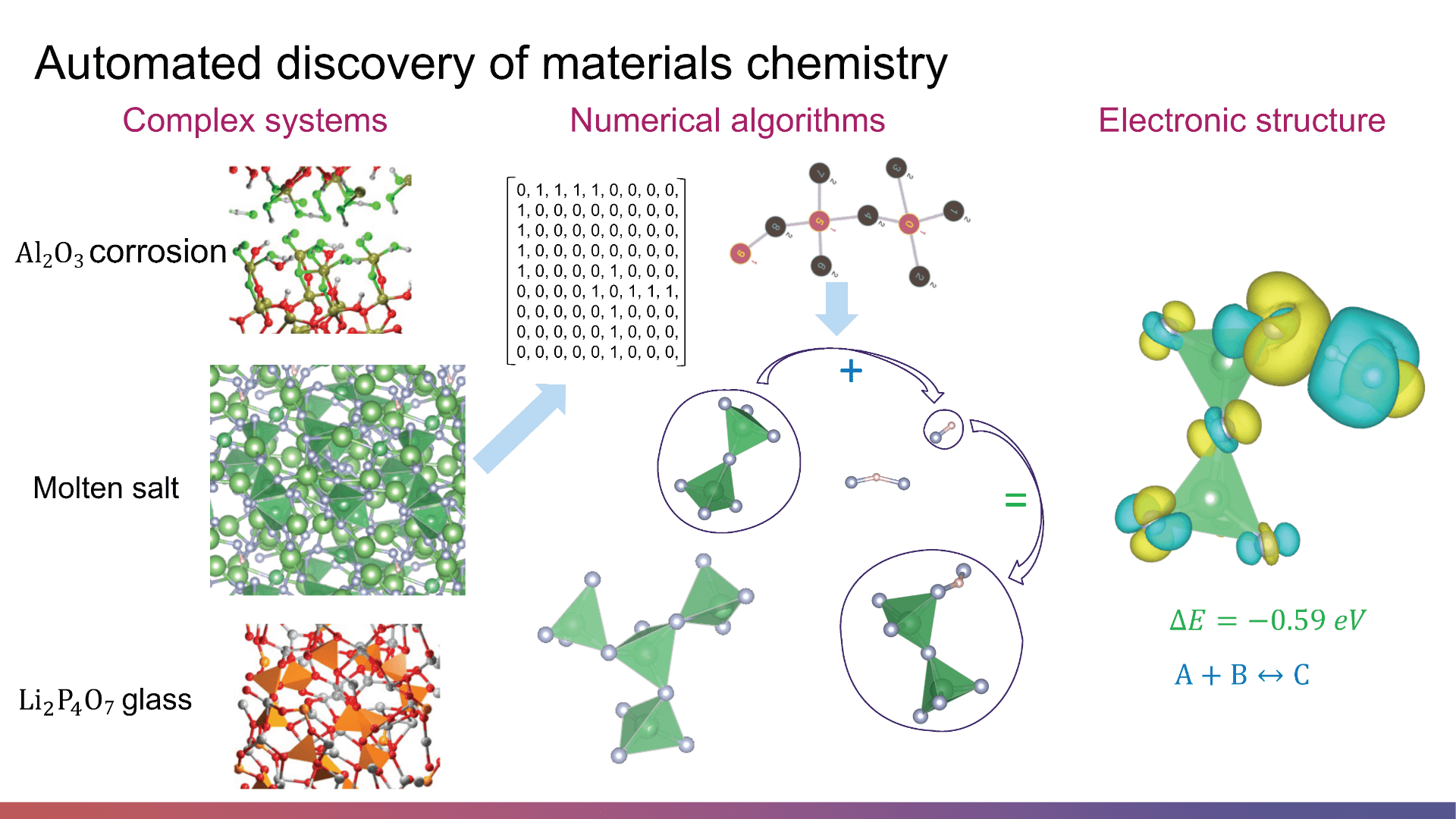
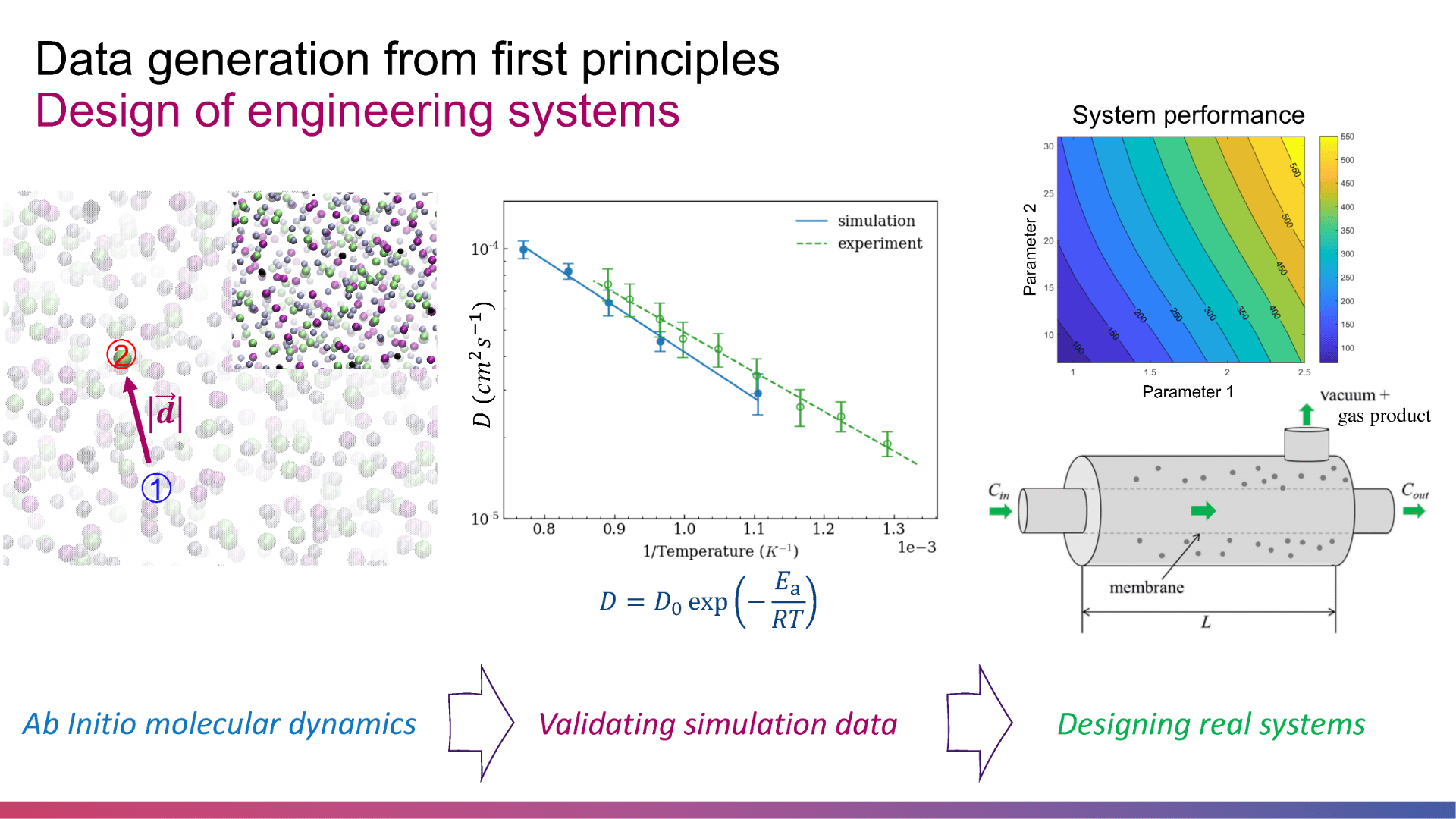
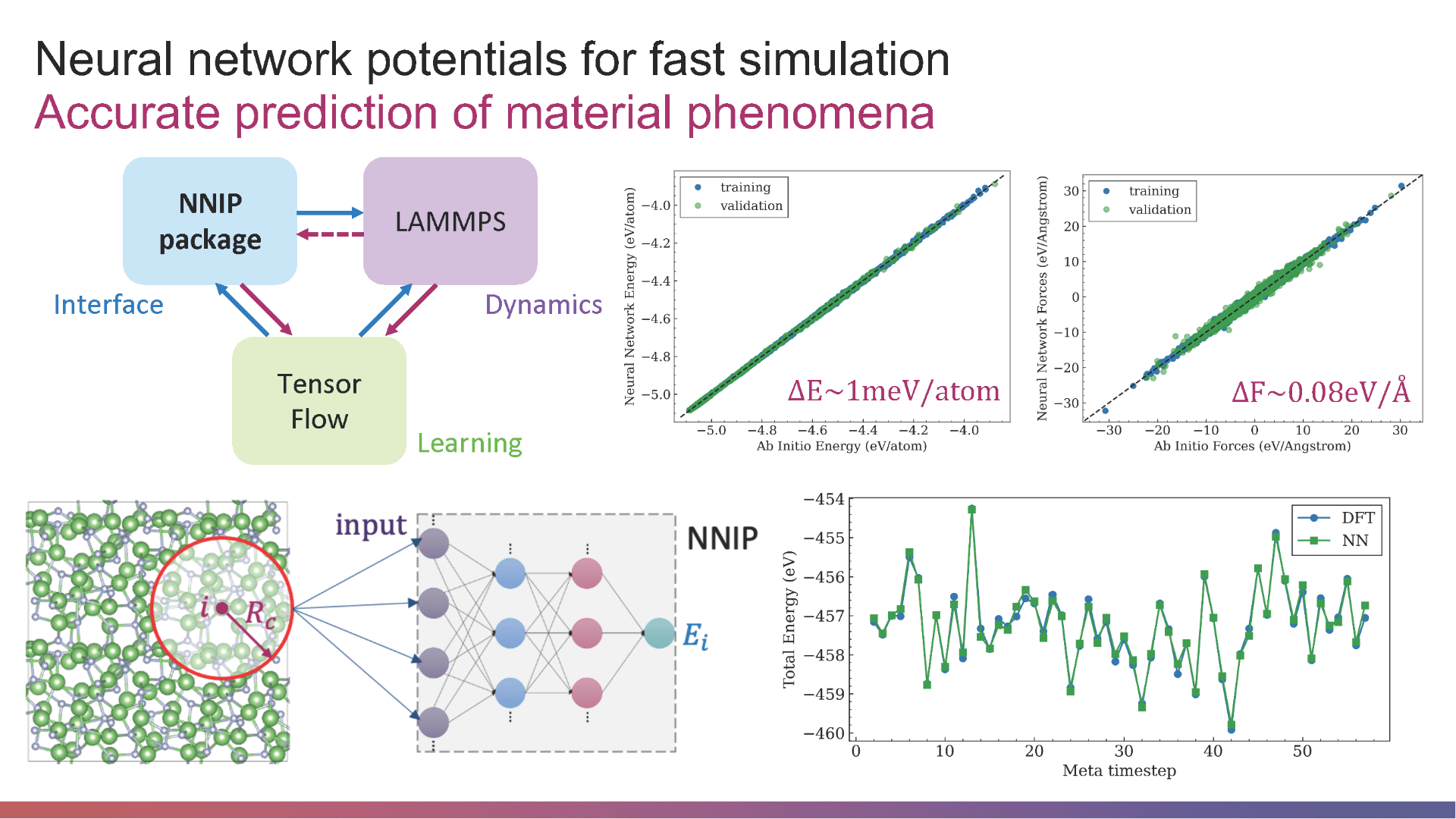
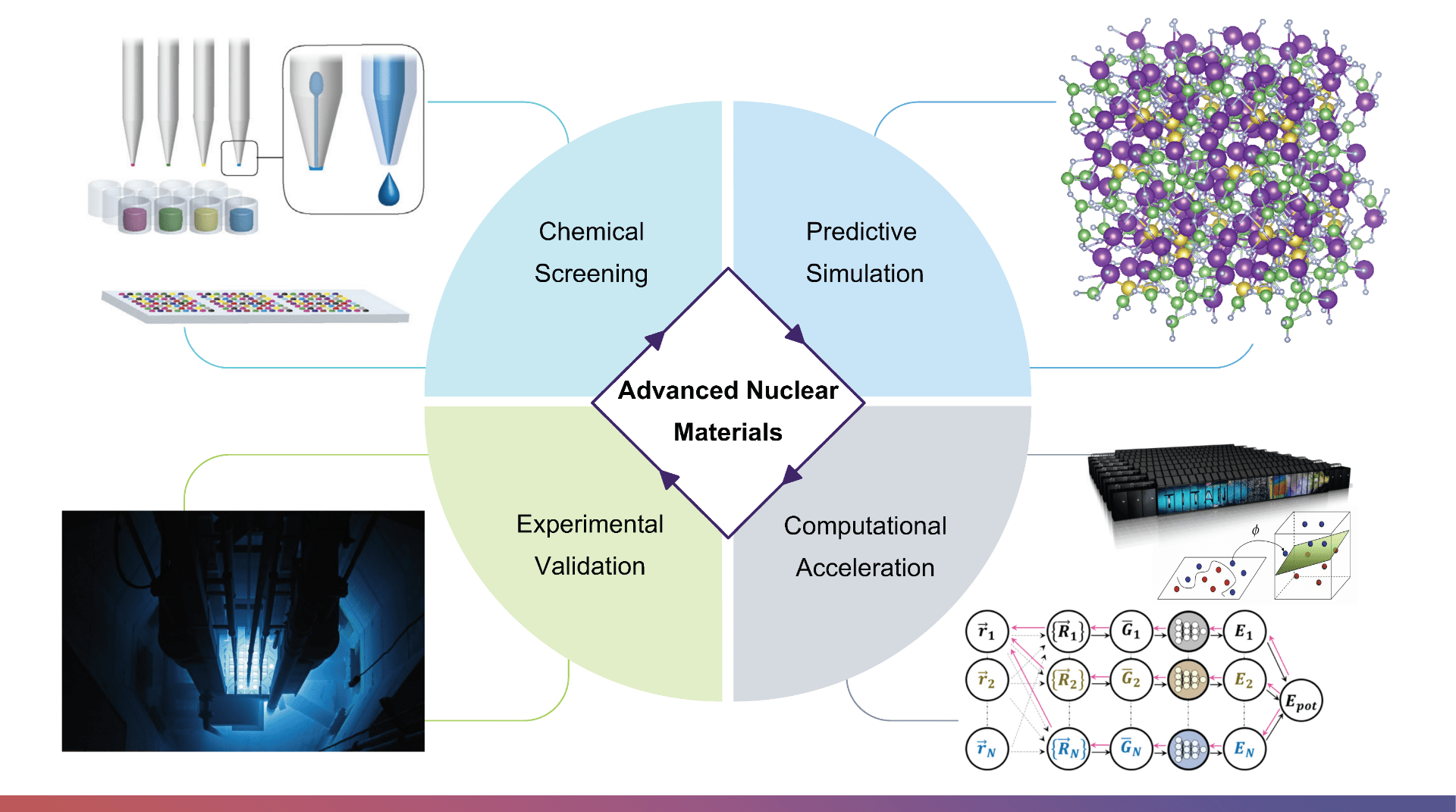
Developing fusion technology as a viable energy resource requires significant development of new materials, and support systems that can manage high heat, irradiation fluxes, and magnetic fields, to harness fusion power, breed fuel, and ensure safe reactor operation. Here, we support the development of new testing and monitoring methods to understand performance of materials (semiconductors for power drive devices, superconductors, fusion blankets) at in-service conditions using a combination of artificial intelligence, modeling & simulation, and guided experimentation.
The last decade has seen significant interest in advanced nuclear reactors that could dramatically increase safety and reduce the cost of nuclear energy. However, there remains significant challenges in developing materials that can sustain high temperatures, high neutron fluxes, and chemically harsh environments that are found in many of these systems. Further, qualifying a material for a new nuclear application can take decades due to the extensive experimentation required to understand material behavior in reactor operation. Thus, in order for advanced reactors to make a timely impact on reducing global carbon emissions, the process of understanding material behavior must be significantly accelerated and improved. This group supports the development of advanced systems such as high-temperature gas-cooled reactors (HTGRs) or molten salt fission and fusion reactors by addressing key materials challenges. We focus on performing physics-informed simulations that provide fundamental insight into material screening and discovery.
